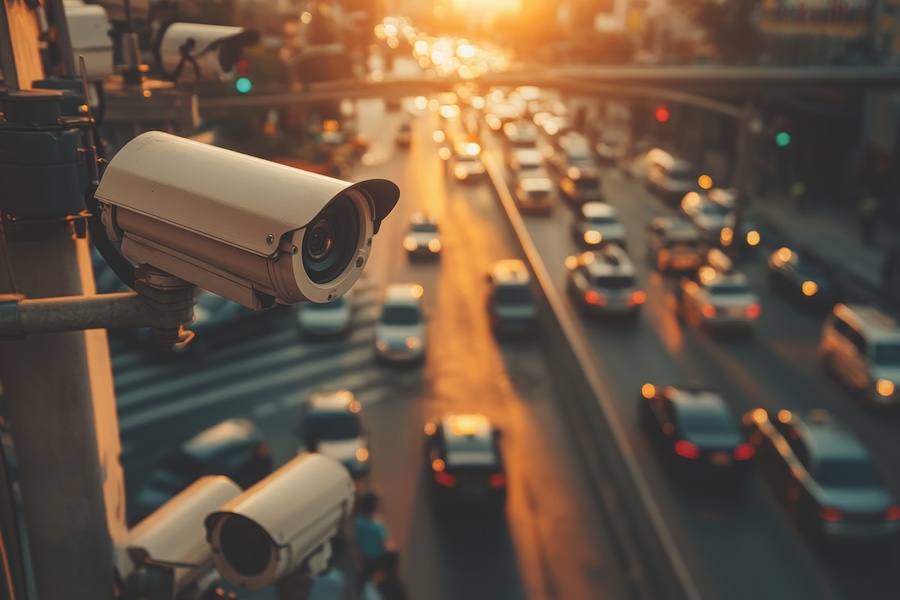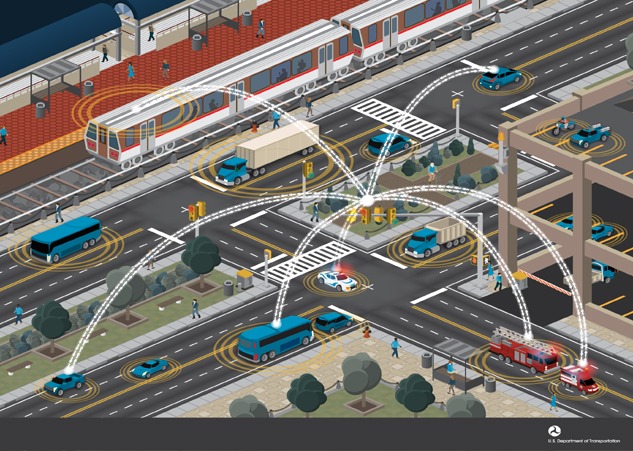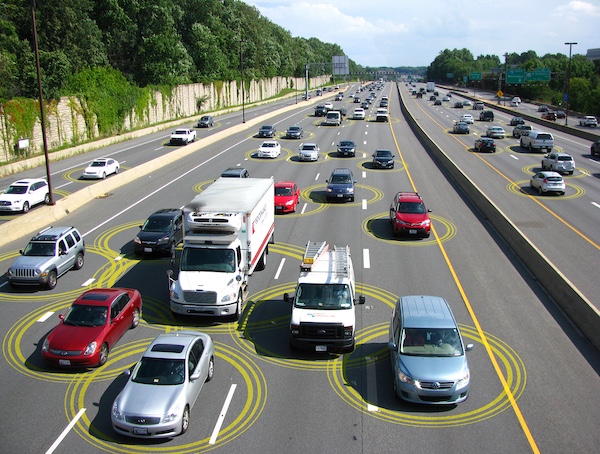Julia Davis
Professor Jeff Ban's research uses data to address traffic issues, ensuring solutions that protect personal privacy in modern cities.

As cities look to modern technology to solve transportation challenges, data collected from smartphones, GPS devices and traffic cameras offers valuable insight into how we move. But while these advancements promise to ease congestion and improve efficiency, they come with a price: personal privacy. Jeff Ban, the William M. and Marilyn M. Conner Endowed Professor in CEE, is working to ensure we don’t have to choose between smarter streets and personal privacy by developing innovative algorithms that protect both.
Ban has spent more than a decade exploring the intersection of transportation systems and data privacy. His research focuses on how mobility data from smartphones, GPS systems and traffic cameras can help improve traffic flow and efficiency in urban environments. At the same time, he addresses the increasingly pressing question of how to protect personal privacy in an age when data is continuously being collected, shared and analyzed.
“There's always a balance between utility — how you use the data — and privacy — how you protect it,” Ban says. “You don't need 100% privacy because then the data would be useless.”
The evolution of traffic data collection

Professor Jeff Ban
Ban's journey into privacy-related transportation research began in the early 2000s when “mobile sensing” — using smartphones and other devices to collect data — was still new. The introduction of smartphones and their built-in GPS systems opened up new ways to gather detailed traffic data. Ban, then a postdoctoral researcher at the University of California, Berkeley, was involved in a project where 100 cars equipped with Nokia phones collected data to monitor traffic conditions on a stretch of Interstate 880 in California.
“Even with just 2 to 5% of the cars giving us data, we could accurately estimate traffic speeds and congestion and even detect accidents before the authorities did,” Ban recalls. This early success showed how mobile sensing technology could revolutionize real-time traffic management.
However, this success came with new challenges. The sheer volume of data collected, from where people traveled to what time they stopped for coffee, raised significant privacy concerns.
“Just limiting the release of personal identifiable information wasn’t sufficient,” Ban says. “With mobile data, even if we don’t have your name, we can infer where you live, where you work and even your behavior patterns.”

Connected vehicles communicate at intersections to enhance safety and efficiency. Image courtesy of the U.S. Department of Transportation.
Ban addressed these concerns by co-designing privacy techniques and modeling methods to responsibly manage and share transportation data. One such method is called “virtual trip lines.” Instead of continuously tracking someone’s entire journey, this approach collects data at specific locations along a person’s route, creating short segments of movement, or trajectories. These segments are then filtered to ensure that individual trajectories cannot be linked together to form a complete path. By focusing only on the most relevant locations, this method provides valuable traffic data while minimizing privacy risks.
Ban’s algorithms strike a balance between preserving privacy and ensuring the data remains useful for improving transportation systems. His approach doesn't involve inventing entirely new algorithms but rather combining existing ones in ways tailored to transportation data.
“There are thousands of algorithms out there. But transportation experts and privacy researchers haven’t always been in conversation. We’re trying to build a bridge between these fields, matching the right privacy methods to the data, so we can protect privacy and still make the data useful.”
Shaping the future of smart cities

This visual illustrates how vehicles could communicate with each other to share data and improve traffic flow. Ban’s research addresses how such advancements can be achieved while protecting personal privacy. Image courtesy of the U.S. Department of Transportation.
Ban’s research has far-reaching implications for the future of smart cities and advanced transportation systems worldwide. As urban centers become more connected and data-driven, the ability to collect and use mobility data will be important in solving challenges like traffic congestion, pollution and road safety. These advancements won’t just make cities more efficient; they have the potential to significantly improve everyday life.
One promising area of Ban’s work focuses on “vehicle-to-everything” (V2X) communication. This technology allows vehicles to share data with other vehicles, traffic infrastructure like traffic lights, and even pedestrians carrying smartphones. For instance, a vehicle could send information to a traffic light to help optimize signal timing or communicate with other vehicles to prevent accidents. Imagine a pedestrian crossing a busy intersection — V2X technology could notify nearby vehicles of the pedestrian’s presence, helping drivers react in time to avoid a collision. By sharing data in real-time, V2X technology has the potential to make roads safer and traffic flow more efficient. These kinds of systems are already being tested in cities like Seattle to enhance traffic safety.
Privacy is a basic right, just like free speech. If people feel confident that their data is being protected, they’re more likely to share their data and support the technologies that can improve traffic systems and make our cities smarter.”
“We’re working to make sure technology can improve traffic safety without turning cities into places where privacy is at risk,” Ban says.
To protect the privacy of this shared data, Ban’s team is working with researchers from the University of Connecticut, with support from the National Science Foundation, to develop advanced methods like local differential privacy. This technique adds small, random “noise” to the data, similar to blurring an image — where the overall picture remains visible but personal details are obscured. This ensures that specific information cannot be traced back to an individual or vehicle. So even though traffic patterns or vehicle locations are analyzed, the privacy of each driver is protected.
Originally published November 21, 2024